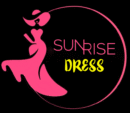
Understanding OEM and ODM Models
In the clothing industry, understanding the distinctions between OEM (Original Equipment Manufacturer) and ODM (Original Design Manufacturer) is crucial for businesses looking to develop and manufacture products effectively. OEM refers to a manufacturing entity that produces products based on specifications provided by another company. Essentially, brands utilize OEMs to create goods that carry their branding, while the OEM itself remains relatively hidden in the supply chain. For instance, a women’s dress brand might provide specific designs and material choices to an OEM, which then produces the garments according to those instructions, ensuring the products meet the required quality standards.
In contrast, ODMs offer a different approach to the production process. An ODM not only manufactures products but also takes on the responsibility of product design. This means they create both the design and production processes, allowing brands to leverage the ODM’s expertise in product development. For example, a women’s dress brand may collaborate with an ODM that has significant experience in the latest fashion trends and technology, resulting in innovative designs created from concept to finished product. This model offers brands a more hands-off approach, potentially reducing the time and effort spent on product development.
Key differences between the two models lie in their roles and responsibilities in the production cycle. While OEMs predominantly focus on manufacturing existing designs provided by the brand, ODMs also engage in the ideation process, influencing the creative aspect of product development. For a women’s dress brand, choosing between an OEM and an ODM can significantly impact its branding strategy and market positioning. Understanding these nuances enables brands to make informed decisions based on their internal capabilities, design ambitions, and budget constraints. As businesses navigate their options, evaluating the implications of each model becomes essential for effective growth and product success.
The Benefits of Using the OEM Model
The Original Equipment Manufacturer (OEM) model offers numerous advantages for women’s dress brands, making it a preferred choice for many businesses in the fashion industry. One of the most significant benefits is that OEM allows brands to maintain substantial control over their design and branding processes. This degree of ownership ensures that the final products resonate well with the brand’s identity and target market, enhancing customer recognition and loyalty.
Another notable advantage of the OEM model is the flexibility it provides in terms of product customization. Women’s dress brands often cater to specific consumer needs and preferences, and OEM partnerships offer the opportunity to tailor designs, fabrics, and styles to meet these demands. This level of customization not only enhances the appeal of products but also differentiates brands in a competitive market.
In addition to creative control and customization, OEMs may lead to lower production costs. By partnering with an OEM, brands can leverage established supply chains and manufacturing efficiencies, reducing overhead expenses. This can be particularly beneficial for emerging women’s dress brands looking to maximize profit margins while maintaining product quality.
Furthermore, OEM partnerships can create an environment conducive to innovation and quality assurance. Manufacturers often have access to cutting-edge production technologies and skilled labor, which can foster the development of unique product offerings. Such collaborations enable dress brands to stay ahead of industry trends, ensuring that their collections are both relevant and appealing to consumers.
Ultimately, the OEM model empowers women’s dress brands to preserve their unique identity while optimizing production processes and costs. By harnessing the benefits of OEM, brands can position themselves more effectively in the marketplace, cultivate customer loyalty, and drive sustainable growth.
The Advantages of the ODM Model
The Original Design Manufacturer (ODM) model presents a myriad of advantages for women’s dress brands seeking to optimize their product development processes. One of the most notable benefits of aligning with an ODM is the streamlined approach to design and production. By utilizing the manufacturer’s design capabilities, brands can significantly reduce the time and effort required to bring a new collection to market. This partnership allows brands to focus on their core competencies, such as marketing and brand management, while the ODM takes care of the intricate details of product design.
Cost-effectiveness is another compelling advantage of the ODM model. With the ODM handling both design and production, brands can benefit from reduced operational costs. This is particularly advantageous for new and emerging brands that may lack the resources to hire a full in-house design team. By leveraging the expertise and established processes of an ODM, brands can create high-quality women’s dresses at a lower cost, enabling them to allocate funds towards other important aspects of their business operations.
Moreover, the ODM model minimizes the risk associated with entering new market segments. By collaborating with experienced manufacturers, brands can more effectively navigate market demands and respond quickly to consumer preferences. This adaptability is key in the fast-paced fashion industry, allowing brands to test new styles and collections with reduced risk. Finally, the ODM model enhances speed to market for new women’s dress collections. As consumer trends shift rapidly, the ability to quickly launch new products is crucial for maintaining competitive advantage. In essence, the ODM model offers an array of benefits that can significantly elevate a women’s dress brand’s market presence and operational efficiency.
Choosing the Right Model for Your Women’s Dress Brand
Determining whether to adopt an Original Equipment Manufacturer (OEM) or an Original Design Manufacturer (ODM) model for your women’s dress brand involves critical assessment of multiple factors. This decision fundamentally hinges on your brand goals. If you aspire to maintain full control over design and branding, the OEM model might be the appropriate choice, allowing for the customization necessary to express your brand identity. Conversely, if your focus is more on minimizing initial costs and speeding up the production process, the ODM model can offer ready-to-manufacture designs that align with market trends.
Your target market plays a crucial role in this decision-making process as well. Understanding the preferences and buying behaviors of your demographic can dictate whether you need a customized product line (favoring OEM) or if you could benefit from using established designs and concepts (favoring ODM). Additionally, evaluating your investment capacity is paramount. OEM typically requires a higher upfront investment due to the need for bespoke design and manufacturing setups, while ODM can be less financially burdensome since it often utilizes existing design solutions.
Production capabilities also factor into this equation. If your brand has the necessary infrastructure and resources to handle the complexities of production, OEM might offer greater long-term benefits. However, for brands with limited manufacturing capabilities, particularly startups, partnering with an ODM can provide a viable and more manageable route to market entry. To illustrate these considerations effectively, case studies from established women’s dress brands could provide valuable insights, showcasing how they navigated this choice based on their unique contexts. Ultimately, a well-structured evaluation based on these factors will empower your women’s dress brand to make a well-informed decision tailored to its specific needs and goals.
